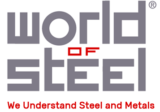Scrap Recycling Facts
Scrap Recycling Facts
- Almost 40% of the world’s demand for copper is met using recycled material.
- At present, approximately 30% of global zinc production comes from secondary zinc.
- Over 80% of the zinc available for recycling is eventually recycled. Aluminium
- Of an estimated total of 700 million tonnes of aluminium produced since commercial manufacturing began in the 1880s, about 75% of this is still being used as secondary raw material today
- One tonne of recycled aluminium saves up to 8 tonnes of bauxite, 14,000 kWh of energy, 40 barrels (6300 litres) of oil, 238 million Btu`s of energy and 7.6 cubic metres of landfill.
- The energy saved by recycling one tonne of aluminium is more than enough to power a US household for a whole year (The average US household uses about 10,000 kWh year).
- Recycling aluminium uses 95% less energy than producing aluminium using raw materials. • Recycling one aluminium can saves enough energy to power a 100-watt bulb for almost four hours.
- A used aluminium can is recycled and back on the grocery shelf in as little as 60 days.
- For every single can manufactured using virgin ore, the same amount of energy used will produce 20 recycled cans.
- The aluminium drink can is the world`s most recycled container - more than 63% of all cans are recycled worldwide.
COPPER
Copper’s recycling value is so high that premium-grade scrap holds at least 95% of the value of the primary metal from newly mined ore. Recycling copper saves up to 85% of the energy used in primary production. In order to extract copper from copper ore, the energy required is approximately 95 million Btu/tonne. Recycling copper uses much less energy, about 10 million Btu/tonne.
By using copper scrap, we reduce CO2 emissions by 65%
ZINC
The average car contains up to 10 kg of zinc in its galvanised body panels. When they are discarded, these panels can be readily made into new parts of identical quality.
Total recovery of zinc within the non-ferrous metals industry amounts to 2.9 million tonnes, of which 1.5 million are new scrap or process residues and 1.4 million are old scrap. Secondary zinc production uses 76% less energy than primary.
Nearly 70% of zinc from end- of-life products,, is recycled. Old zinc scrap consists primarily of die cast parts, brass objects, end-of-life vehicles, household appliances, old air conditioning ducts, obsolete highway barriers, and street lighting.
LEAD
50% of the lead produced and used each year throughout the world has been used before in other products. Today, about 80% of lead is used in acid batteries, all of which is recoverable and recyclable. Some countries boast a 100% recycling rate and most are capable of the same result.
Using secondary lead instead of ore reduces CO2 emissions by 99%
TIN
Globat tin production amounts to 350,000 tonnes of which 50,000 tonnes is produced from scrap and other secondary sources. Primary production of tin requires 99% more energy than secondary production
